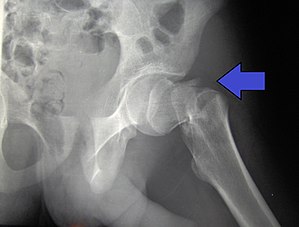Hips Don't lie
Inside the Joint
 | ||||||
Each hip is a ball-and-socket joint. The ball is the top of your thighbone (femoral head). The socket (acetabulum) is in your pelvic bone. Smooth, slippery tissue called cartilage lets the ball and socket glide against each other when you move. A thin lining (synovium) tops the cartilage and makes a bit of synovial fluid, which further eases rubbing. Tendons, ligaments, and muscles complete the joint.
Osteoarthritis
Dislocation 
It happens when the ball on top your thighbone is knocked out of its pelvic socket. It usually takes a lot of force, as when you fall from a ladder or crash a car. All that power often causes other injuries like tissue tears, bone fractures, and could even damage nerves, cartilage, and blood vessels. Get to a hospital. It’s very painful, and you won’t be able to move your leg much, if at all, until your doctor starts to treat it.
Bursitis
It’s when fluid-filled sacs, or “bursae,” that ease friction between muscle, tendons, and bones get irritated and swollen. It can happen on the outside bony part of your hip (trochanteric bursitis), where it causes sharp, intense pain that dulls and spreads out over time. Less often, it happens on the inside (hip bursitis), where it causes pain in the groin. Either may worsen when you walk, squat, or climb stairs.
Labral Tear
You can damage the cartilage at the bony edge of your hip socket that helps keep the joint together. You could injure it suddenly in a twisting fall or an accident, or you might simply wear it away with the same motion over time. You might feel clicking sensations and have pain in your groin or hip. You’re more likely to get it if you play ice hockey, soccer, football, or golf.
Hip Strain
It’s when you overstretch or tear any of the muscles and tendons that help your hip joint move. (It’s a “sprain” when it happens to a ligament.) It could affect lots of muscles like your hip flexors, glutes, abductors, adductors, quadriceps, and hamstrings. The area might swell, weaken, and hurt, especially when you use it. Rest, ice, and over-the-counter pain relievers are often enough to get you healthy again.
RICE: Rest, Ice, Compress, Elevate
It’s a good first step for any hip pain. Rest, but don’t stop all movements (that could make things worse), just the ones that hurt. Ice for 20 minutes at a time, and use a cloth so you won’t damage your skin. Compress the painful area with an elastic bandage, but not too much. Loosen it up if you see skin turning blue. Elevate the injured part on a pillow or stool to stop blood from pooling there.
Medications
Nonsteroidal anti-inflammatory drugs, or NSAIDs, are often used to lessen pain and inflammation for arthritis and other painful hip problems. Most are pills, but creams and gels are also available. Your doctor can help you treat more serious pain and underlying conditions with corticosteroids, pain relievers, and drugs to treat autoimmune and inflammatory diseases.
When to Go to the DoctorIf home care doesn't curb your pain, make an appointment with your doctor. Ask someone to drive you to the emergency room if an injury caused your hip pain and your hip doesn’t look normal, or you can’t move your leg or put weight on it. You should also go to the ER if you have intense pain, sudden swelling, or any sign of infection like fever, chills, and red skin. Prevention
Some of the same things that help treat hip pain can make it less likely for you to get it in the first place. For example, if you're overweight, losing even a few pounds may ease stress on the joint. Exercise (ask your doctor about the right amount) can also help. Take it easy. Start with a warmup and stretch, stop when something hurts, wear the right shoes, and seek soft surfaces like hiking trails, not hard ones like asphalt and concrete.
|





Comments
Post a Comment